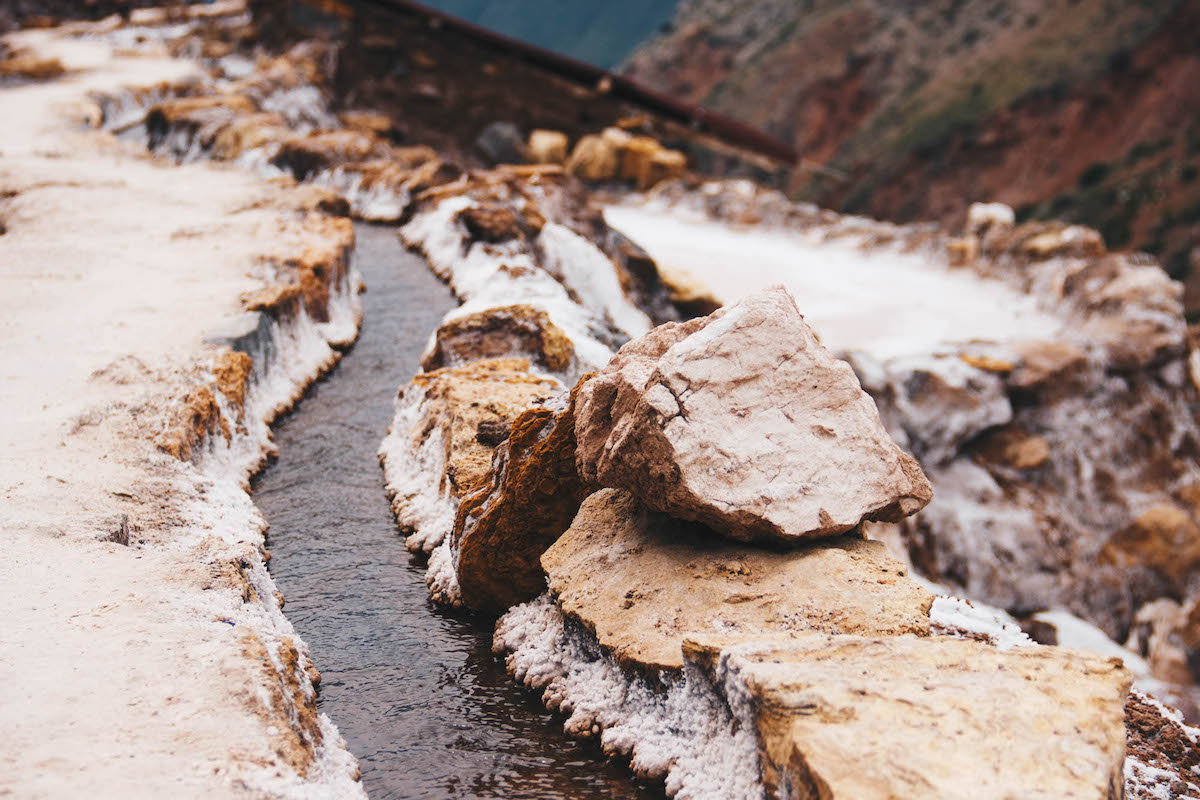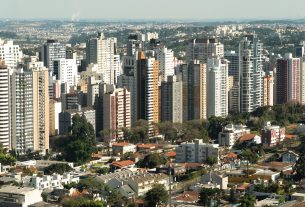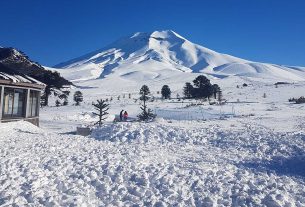White interrupts the landscape almost always dominated by earthy tones. We have already seen it from afar, from the road that leads to the entrance to the Maras Salinas. Nestled in Qaqawiñay Mountain, 3,380 meters above sea level, they look like little white houses from some postcard city. But not. As we advance, it becomes clear that these are small pools built in steps on the sloping land to produce the main product there, salt.
Surrounded by the Andean mountains, 40 kilometers from Cusco and one kilometer from the small village of Maras, this small saline oasis has helped support peasant families since the pre-Inca period and even supplied salt to the Spanish Empire during colonization. Today, in addition to salt and products made with it, such as peppers and other seasonings, the Salinas have brought a new livelihood opportunity to the local population: tourism.
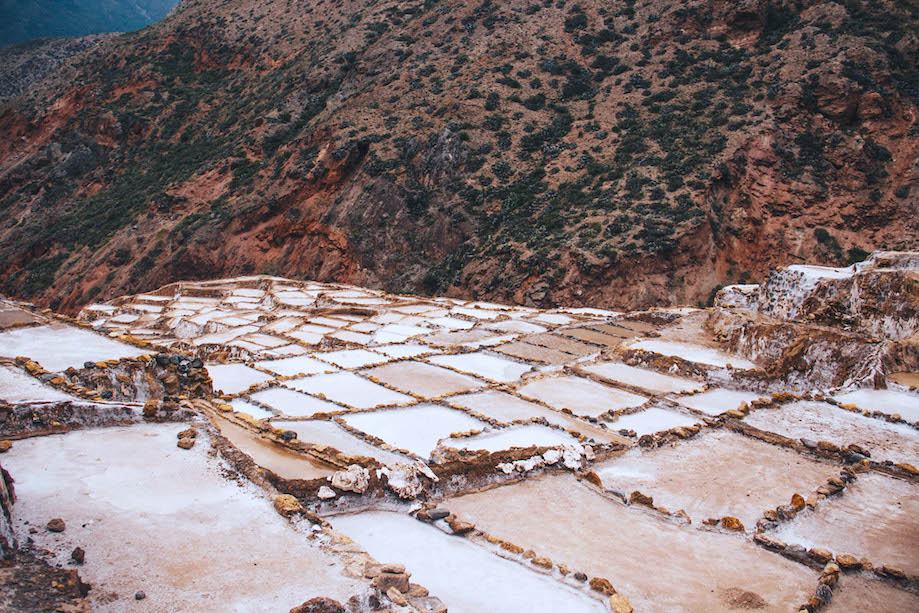
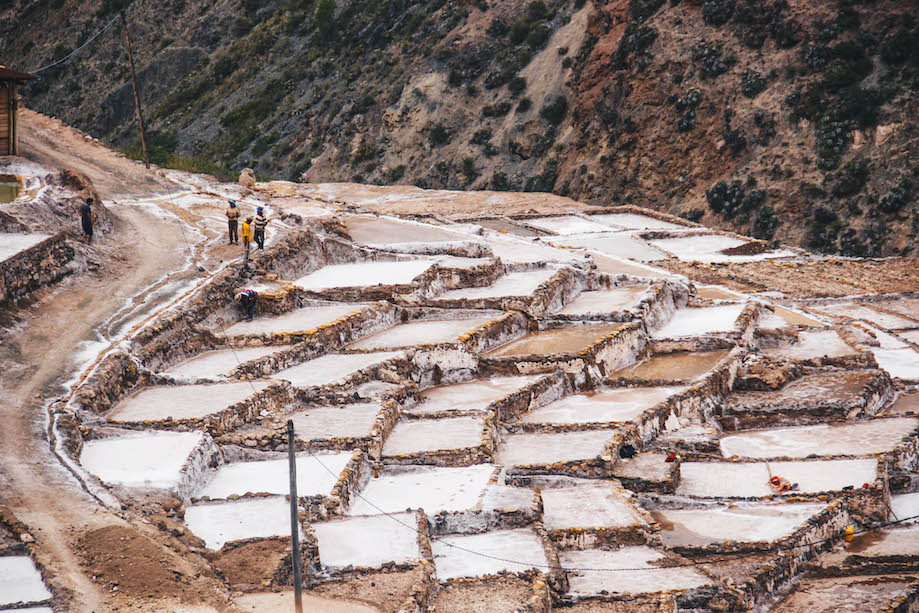
Maras is only accessible via a dirt road that curves and winds through the region’s hills, but it has an ace up its sleeve: it faces the Urubamba mountain range and from there you can see the snow-capped peaks of “Verônica” ae “ Chikon.” This, and its strategic position in the Sacred Valley of the Incas, ended up making the Moray – Maras crossing quite common among hikers in the region and in tourism agencies, which offer day trips between the cities. And, in the middle of the way, are the Salinas de Maras.
Since around two thousand years ago, salt has been obtained through the evaporation of water from a hypersaline underground spring, which is directed through a complex system of canals that supply the pools from top to bottom, in a flow very well controlled by the salt mines.
Even today, salt is extracted using traditional technical tables, which are passed from generation to generation by the families that maintain the more than three thousand salinera pools, in a cooperative scheme. Any resident of Maras can have their own tank and work in the salt mines, and the money raised from visitors is divided between them.
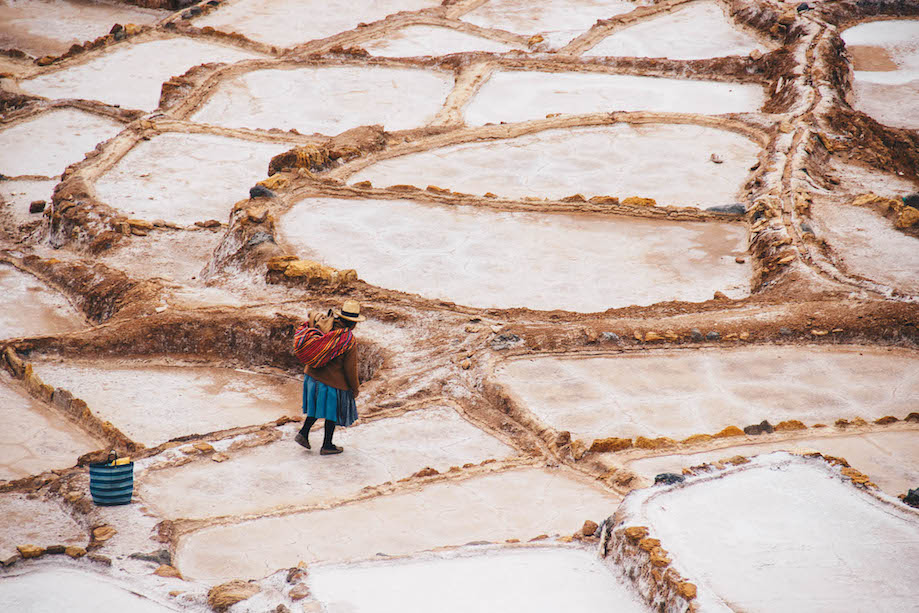
Read too:
Tour through the Sacred Valley of the Incas, near Cusco
What to do in Cusco, the capital of the Incas
Machu Picchu: Our tips and trip report
The Salt of Maras
In the dozens of stalls set up outside and inside the salinera, all types of products made from Maras salt are for sale. There is common salt with different seasonings, there is a kitchen kit, there are overpriced souvenirs typical of tourist places. At first glance, it may seem expensive to pay 15 soles (R$17) for a pot of salt, but after getting in touch with traditional techniques and knowing a little more about the product, the price is justified.
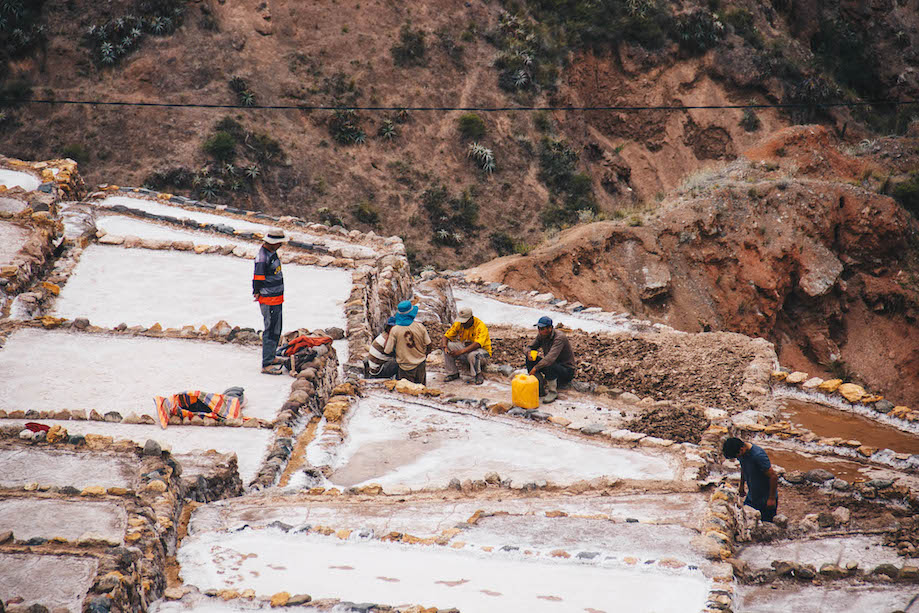
There are only four places in the world where it is possible to extract pink salt, recognized for its characteristic hue due to the presence of elements such as magnesium, calcium, potassium and silicon. The most famous of them is the Himalayas, but the Maras Salt Flats are part of this select group. Despite being controversial in scientific circles, many people believe that this salt has superior quality, both due to the minerals present in its composition and because it has a reduced amount of sodium.
How to visit the Maras Salt Flats
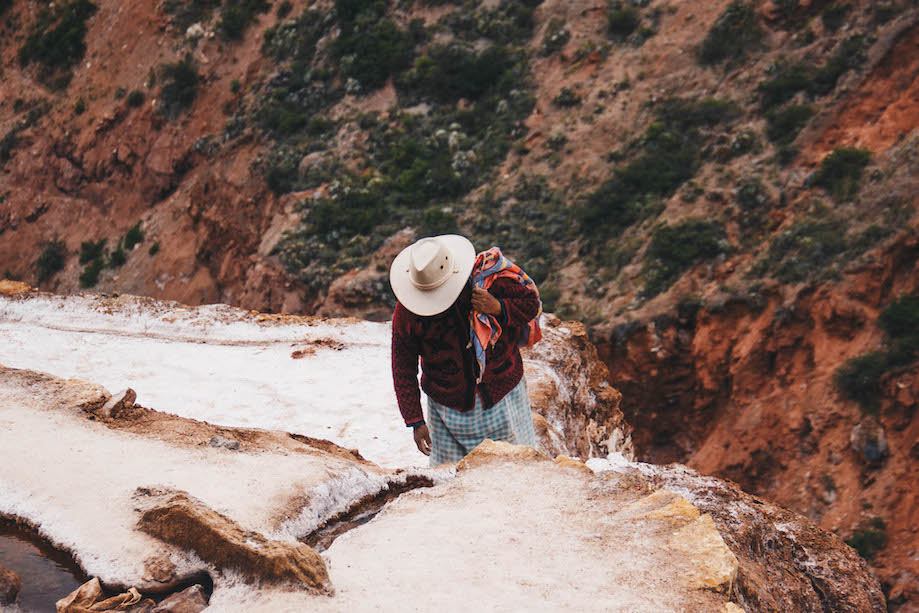
Access to the Maras Salinas costs 7 soles (R$8), which must be paid in cash at the local ticket office. The place is not included in the Sacred Valley tourist ticket.
To get there, the most common way is to hire an agency tour in Cusco. They take care of transportation and include a guide. However, the more adventurous can walk along the dirt road from Urubamba, passing through the salt flats and heading towards Maras. This is the most common route, since Urubamba has more tourist facilities, but we did it the other way around: we were staying in Maras and continued to Urubamba, traveling through the bucolic Andean landscape. If you also want to have this experience, see accommodation options in the Sacred Valley of the Incas here.
Are you going to travel? Insurance is essential on any trip. Don’t be left unprotected in Peru. See now how to guarantee the best value for money on travel insurance, and with a discount.


